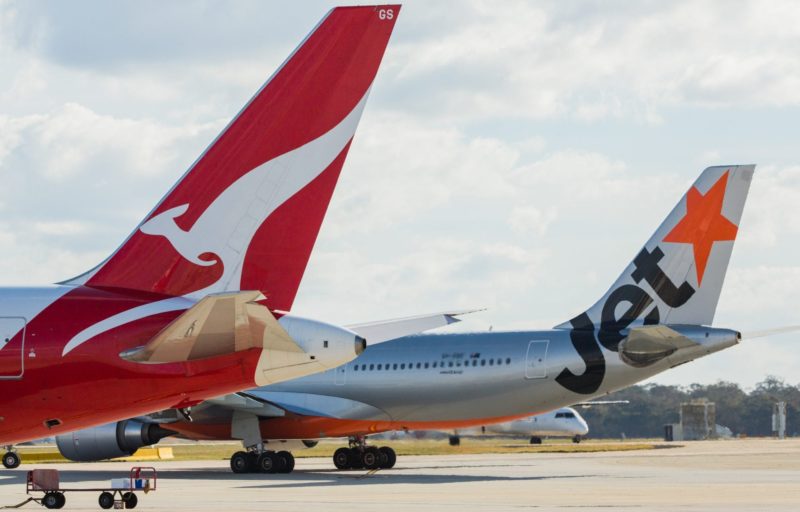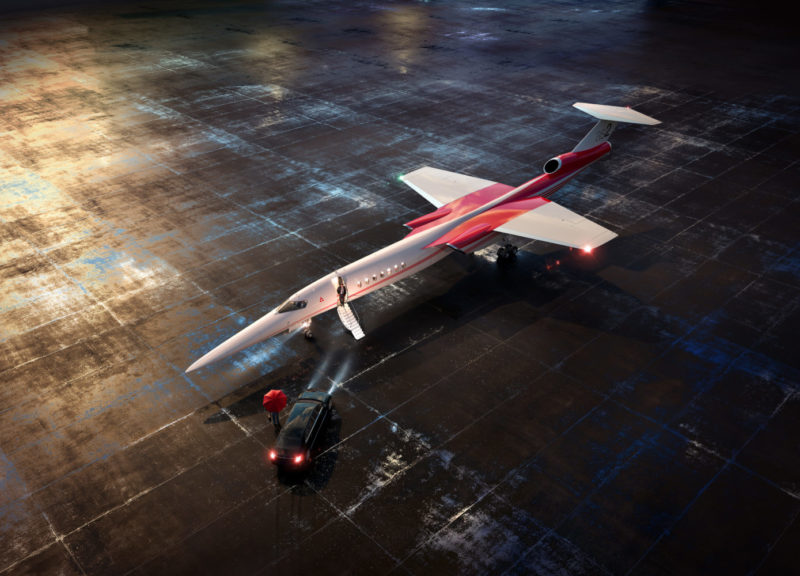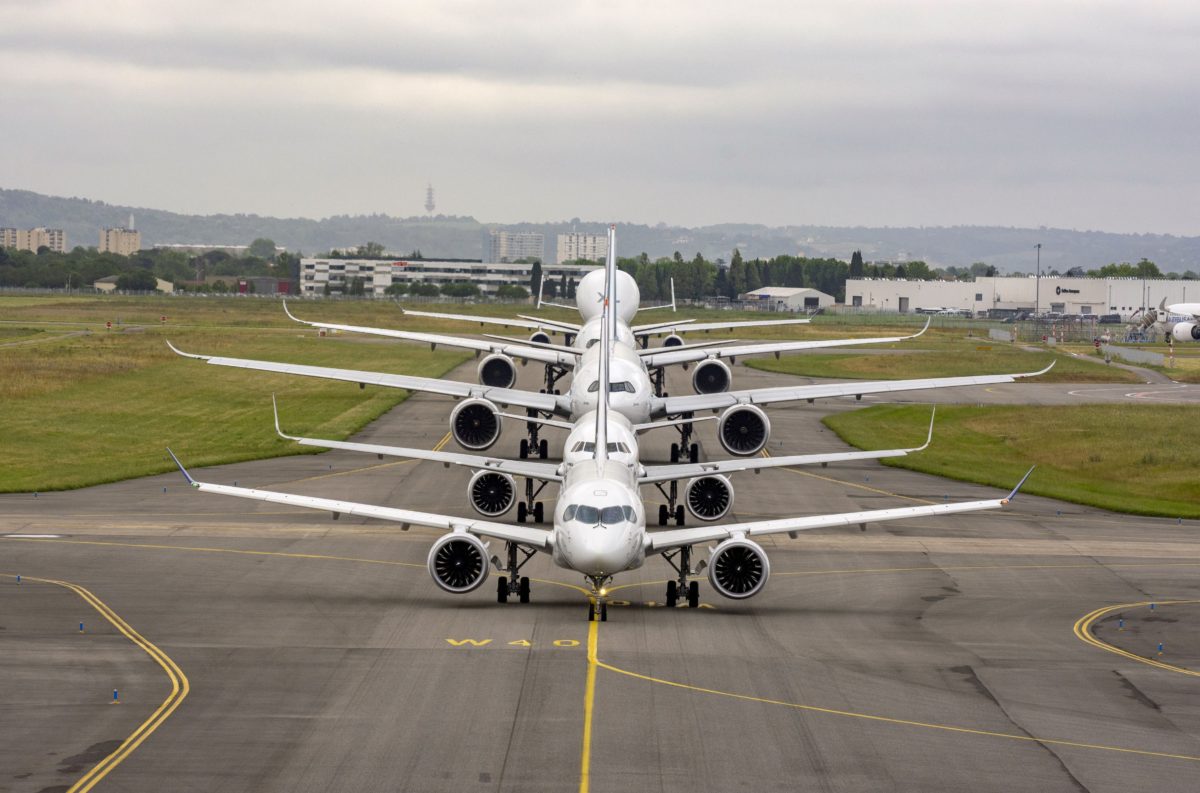2019 saw a large collection of positive and negative aviation news announcements and events that have, and are still, shaping the aviation industry in its progressive glory.
With major stories such as the Boeing 737 MAX dominating the news scene, it is easy to forget what else happened; so in no particular order, let us flick through the stories to see what the aviation highlights of 2019 were.
Qantas Listed as Safest Airline
Early in January, Qantas was announced as the worlds safest airline after searching through audits completed by government authorities, airline incident records, fleet ages and profitability.
Out of 405 airlines Qantas made it to the top, with no hull losses or fatalities recorded over the 60 years in which Qantas has operated jet-powered aircraft.
Making matters better for the airline their low-cost carrier, Jetstar Australia, achieved a position as the world’s safest low-cost airline.

Qantas has pioneered various technical enhancements to airline operations and helped develop systems to perform tricky landings over time, Qantas is also regarded by the aviation industry as the most experienced airline.
For more details on Qantas’ safety achievement, see this article from the 4th of January 2019:
Boeing Unveils Future Wing and Targets Supersonic
As part of the Subsonic Ultra Green Aircraft Research program (SUGAR) Boeing and NASA worked on a new futuristic wing design that aims for faster and higher air travel, all while being super efficient.
The wing, which Boeing calls the Transonic Truss-Braced Wing (TTBW), will allow aircraft to fly at speeds of Mach 0.8, which is an increase compared to their original design boasting speeds of Mach 0.7-0.75.
The wing would be long and thin, like a glider, measuring in at 51.9 meters or 170 feet. Due to the weight, a modernised truss and sweep were included in the design, which has been in the works for over a decade.
Advancements in computer technology and wind tunnel testing has paved the way for further improvements to be made; with projected fuel burn savings with a T-Tail listed as 60 percent, compared to aircraft from the 2000s.
As well as developing new wings, Boeing and Aerion signed a partnership that will see both companies work together to produce the world’s first supersonic business jet.
Boeing will provide financial support to the program as well as engineering, flight test and industrial resources to the Aerion AS2 supersonic business jet program. Additionally Boeing has made a significant investment in Aerion to accelerate the technology advancements and the design stage, however no details about the investment have been disclosed by either sides.

For more details on the Aerion AS2 supersonic business jet, check out our blog post from February 6th:
Boeing 737 MAX Crisis Grows
The October 2018 crash of Lion Air JT610 was not left untouched in 2019, with significant amounts of focus shifted to a potential design problem with the 737 MAX.
When the second aircraft, Ethiopian Airlines ET302, crashed, the total 737 MAX fatality count grew to 346 and the worlds aviation regulators and airlines began to take matters into their own hands, grounding their fleets and demanding answers from Boeing.
Investigations surrounding the two crashes eventually pointed to an unknown device at the time called the Manoeuvring Characteristics Augmentation System (MCAS) this provided stability for an aircraft that was found to be unstable as a result of the larger CFM engines during testing.
Legal hearings begun and multiple investigations into Boeing were opened, including a criminal investigation, which uncovered unnerving news about the 787 Dreamliner. Additionally various documents and whistle-blowers drew conclusions that Boeing were aware of the problem, before the aircraft was certified.
Deliveries of the 737 MAX were suspended and towards the end of 2019, Boeing announced plans to temporarily stop production of the 737 MAX until certification is complete.
Boeing 777X Unveiled and Delayed
What was meant to be a great moment for Boeing ended up being a quiet unveiling of their new flagship, the 777X. Snowed under by the 737 MAX situation, Boeing opted to host an employee-only unveiling of the aircraft; as a way of shifting their image to something more important.
Hoping to get the aircraft in the air to begin its flight test campaign, Boeing was struck with another setback as technical problems were uncovered with the General Electric GE9X engines; which required them to be sent back to General Electric for a redesign.
During ultimate load testing, a test frame was subject to a nasty failure of the aft fuselage section of the aircraft; which Boeing originally said was just a cargo door blowout. Although it failed before reaching the target load figure, it is believed that Boeing doesn’t have to redo the test thanks to advances in computer simulations and data gathered during the test.
General Electric GE9X Engines Achieve Thrust Record
Although General Electric achieved a world-record thrust rating of 134,300 pounds, during an engineering test on a GE9X engine on the 10th of November 2017, it was announced on 12th of July 2019 as part of the company’s 100-year celebration and to keep their work protected.
The much loved GE90-115B, that powers the Boeing 777-300ER, was the previous the record holder, proudly holding 127,900 pounds of thrust to its name during a test run in 2002.
Despite this impressive news the aircraft the GE9X will power, the Boeing 777X, will only have the engines rated to 105,000 pounds of thrust. However, this means larger and heavier variants can be developed with ease.
Airbus Announces the Death of the A380
As a result of poor sales and an order reduction from Emirates, Airbus announced production of the A380 would be terminated; with the final delivery set to occur in 2021.
Speaking about Emirates’ decision to reduce A380 orders from 162 to 123, then Chief Executive Officer of Airbus Tom Enders had the following to say:
“As a result of this decision, we have no substantial A380 backlog and hence no basis to sustain production, despite all our sales efforts with other airlines in recent years. This leads to the end of A380 deliveries in 2021. The consequences of this decision are largely embedded in our 2018 full year results.”
Despite the shocking, but well-expected, announcement, Enders remained firm on the fact that the A380 is an outstanding engineering and industrial achievement which passengers all over the world praise.
But Emirates didn’t leave Airbus with news to mourn over. An agreement with Airbus was reached that would see the airline order 40 A330-900neos and 30 A350-900s.
However, during the November 2019 Dubai Airshow, Emirates finalised this agreement and ended up ordering 50 A350-900s and 30 Boeing 787 Dreamliners; whilst removing the A330neo from the equation and reducing their 777X order.
50th Anniversary of the Concorde
2019 marked the 50th Anniversary of the Concorde and aviation historian Charles Kennedy covered this perfectly, with a detailed story called Concorde: The Ride of a Lifetime on this blog.
Highlighting the history behind the aircraft, technical developments, the first flight and more, Kennedy secured great praise for his post on our blog.
Airbus Celebrates 50 Years
Also marking 50 years was Airbus who, in order to celebrate such a milestone, launched a company-wide campaign from the 29th of May to the 17th of July.
Various celebrations took place, including one of their most popular events: formation flights.
From the original “Airbus”, the A300, all the way to the A380 Super Jumbo; we covered the history of the company, including its ups and downs.
Airbus A321XLR
During the 2019 Paris Airshow, Airbus announced a new aircraft that the world’s airlines had been requesting for quite some time. Another variant of the highly-successful A320neo Family, the A321XLR was announced to provide airlines with an aircraft that can haul 180-220 passengers up to 4,700 nautical miles or 15 percent more than the A321LR.
The added capability comes from an increase in the maximum takeoff weight to 101 tonnes, also from additional fuel tanks situated in the centre and rear of the aircraft. Additional aerodynamic refinements, including an optimised wing trailing-edge flap configuration, means the aircraft retains the same takeoff performance as the standard A321neo.
Airbus has secured orders and commitments for 450+ A321XLRs from 22 operators and two lessors around the world, including Qantas, United Airlines and American Airlines.
The Boeing 767X?
Perhaps one of the more unusual news stories of 2019; details of a potential re-engined Boeing 767 dubbed the 767X surfaced, with Flight Global being the first to report on the information.
Based on the 767-400ER, the proposed aircraft would be powered by two General Electric GEnx engines. To compensate for the much larger engines, a, new, taller landing gear would be designed to fit in the original 767 airframe.
Whilst intended to be a potential 767 Freighter successor, Boeing has also reportedly looked into using the idea as a new middle-market airplane; to compete with Airbus’ new offerings of the A321XLR and A330neo.
Qantas’ Project Sunrise Research Flights
As part of their efforts to launch non-stop flights between Sydney and Melbourne to Europe and New York, Qantas performed three research flights using brand new Boeing 787-9 Dreamliners.
The goal of these flights was to get an understanding of crew and passenger health, to help shape a new product offering and to gain regulator approval for the ultra-long and strenuous flights.
Sam Chui managed to get on the longest flight from London to Sydney non-stop, which you can see here:
Qantas Selects Airbus A350 Over Boeing 777X
Early December saw Qantas make an announcement that the aviation industry had been eager to hear, for a long period of time. After multiple negotiations with Airbus and Boeing, performance analysis and initial deals were declined, Qantas selected the Airbus A350-1000 over the Boeing 777X.
The aircraft will be used to fly the world’s longest flights between Australia, Europe and America non-stop, which Qantas dubs as the final frontier in aviation.
At this time, the aircraft decision remains a preliminary agreement. Airbus has given Qantas until March to finalise the deal, so flights can commence late 2022-early 2023.
An Aircraft Was Dropped Twice
Yes, the heading sounds rather odd. During 2019, an aircraft in maintenance was dropped twice (at least that we know of) and we were the first to report on one of them.
During a maintenance check an Emirates A380 fell on its nose, creasing the fuselage, causing what appeared to be rather unpleasant structural damage.
Early reports suggested that the aircraft slipped of its jack stands, however it was later reported that the gear was retracted without the locking pins in place.
In December another Airbus faced a similar fate, this time a Spirit Airlines A319, surrounded by scaffolding, collapsed whilst on jack stands.
Little information about the accident is available, however initial impressions of the photos show that a significant amount of repair work will be required to get the aircraft airworthy again. Until more information is released, it remains unknown as to whether the aircraft will be repaired or not.
Qantas Boeing 747 Gets New Life as Engine Testbed
When Qantas retired another Boeing 747 from their fleet it was expected that it would be heading to the scrapyard. However it turns out that Rolls-Royce acquired the aircraft and will send it to be converted into an engine testbed, for their future engine developments.
Rolls-Royce will be installing the latest test equipment available, with the capability to test the latest commercial and business turbofan engines and collect data at far greater speeds than existing platforms. Additionally the new aircraft will support Rolls-Royce Intelligent Engine vision; where engines are connected, contextually aware and even comprehending, starting from their time on the testbed
Rolls-Royce won’t be using this 747-400 testbed to replace their 747-200 though; instead, the company has said they’ll be using both of them alongside each other.
British Airways Gives Boost to Boeing 777X Program
Providing some much-needed relief to the 777X order drought, British Airways signed an agreement for up to 42 777-9 aircraft; consisting of 18 firm and 24 options, worth up to $18.6 billion at list prices.
Although the deal won’t appear in Boeing’s order book until it is finalised, it provided a morale boost to the program which was seeing very slow progress.
Boeing 737 NG Grounding
Adding to the 737 Crisis of 2019 the 737 NG – the model before the 737 MAX – ended up being grounded in moderation around the world, as a result of a critical part being prone to cracking.
During inspections, it was found that a part called a pickle fork, that’s responsible for holding the wings to the fuselage, was prone to cracking. Consequently, airlines had to follow safety directives from regulators to prevent any serious incident or accident from occurring.
Over 20 Airlines Cease Operations
In 2019 there were 23 airlines across the world that ceased operation; these airlines stopped flying due to various reasons, such as financial issues and lack of demand.
One of our writers, Neo Li, compiled a list of the airlines that collapsed in 2019, including a brief overview of each.
Unfortunately the trend is expected to continue in 2020, with Air India and Alitalia on the list of airlines expected to shut down this year.
2019 Aviation Safety
In terms of Safety, the total fatality count for 2019 was recorded as 283 across 20 fatal accidents; as reported by The Aviation Safety Network. During takeoff and approach six accidents were recorded, with zero during climb, ten en-route and 4 upon landing.
The two busiest months for fatalities were March and May, which correspond the the crashes of Ethiopian Airlines Flight ET302 and Aerflot Flight SU1492.
Aviation Safety Network releases 2019 airliner accident statistics: relatively safe, despite rise in accidents https://t.co/hKjqBMPGh7 pic.twitter.com/NWjZG8hZYr
— Aviation Safety Net (@AviationSafety) January 1, 2020
Unfortunately the year concluded with a final accident that left 12 people deceased, after a Fokker 100 crashed into houses in Kazakhstan.
What was your favourite news story of 2019?


